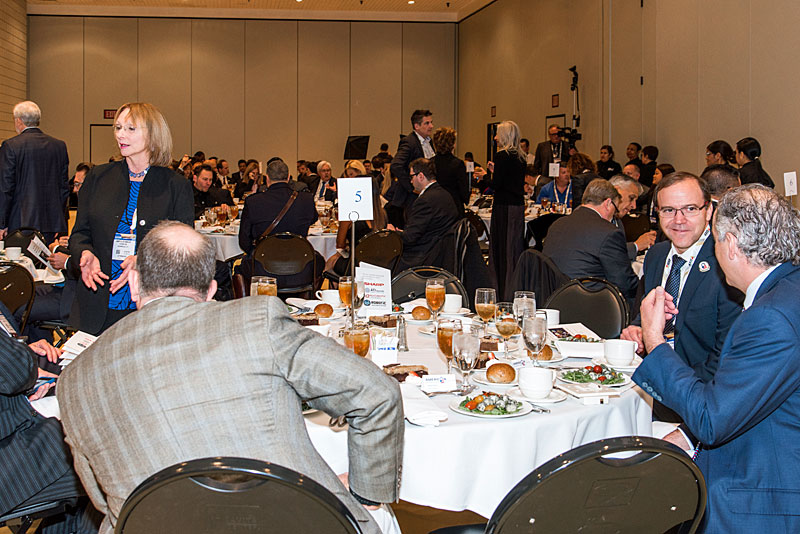
By Medium
Public safety communications have not changed much since the first emergency call was made on 30th June 1937 in London.
Back then, the 999 service only operated within 12 miles and wouldn’t cover the entire UK until 39 years later in 1976.
 However, the devices that we use to communicate with emergency services, be they 999, 911, 112, or others, have evolved faster than anyone thought possible.
However, the devices that we use to communicate with emergency services, be they 999, 911, 112, or others, have evolved faster than anyone thought possible.
As the communications technology has shifted from landlines to smartphones, public safety agencies have been struggling to keep up with the new wave of devices.
What if the emergency services community no longer had to concern themselves with upcoming technology?
What if there was already a solution available that bridged the gap between today and the next generation?
For many agencies around the globe, they’ve found themselves between a rock and a hard place: they want to be able to keep up with the changes in technology, but due to budget constrictions they have to plan technological upgrades ten years in advance.
The reality is that the way we communicate shifts rapidly.
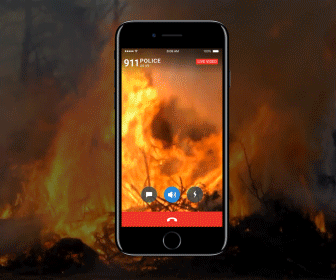 Just think of where we were ten years ago: in 2007, Apple only took the wrappings off the iPhone a few months earlier, FaceTime wasn’t even a glimpse in Steve Jobs’ eye, and people were still using landlines.
Just think of where we were ten years ago: in 2007, Apple only took the wrappings off the iPhone a few months earlier, FaceTime wasn’t even a glimpse in Steve Jobs’ eye, and people were still using landlines.
Today, IP communications and video chatting are the standards, there’s a GPS chip in every phone, and Uber can deliver you a pizza right to your door.
Not one IT manager worth their salt could have predicted the rapid succession of technological innovations all the way back in 2007.
Today, public safety agencies are entirely on board with implementing ‘next generation’ solutions.
For Public Safety Answering Points, ‘next generation’ means IP enabled infrastructure and enhanced communications that include video, GPS, and audio.
However, for many states, cities, and countries there is a roadblock to adopting IP solutions.
(Carbyne is complete, end-to-end solution that connects citizens with public safety first responders. Live video streaming and instant location mean that times to dispatch are cut in half. Courtesy of Carbyne911 and YouTube)
Apps-olutely Not:
Often, to gain the full benefit of IP communications, the citizens need to download a third-party app.
For those in crisis situations, as many who call emergency services are, they need assistance immediately.
Having to download an app to talk to 911, even if it provides a more accurate location or the ability to stream video, is an almost impossible task.

By the time a user has reached the app store, whatever event they’re witnessing is over, and they need an ambulance, police, or fire service.
For us, as a technology company, we knew that our app was only a stop-gap.
We knew that it would be nearly impossible to circumvent the hard-wired three digits 911 (or 999, 112, 000, or others) that we know will connect us with first responders.
We set our Dev team a task: completely overhaul emergency communications so that citizens can stream video direct to 911 without an app.
Today, we’re excited to announce that they have managed to do just that.
The Future Is Here:
We’ve labeled it c-All, the technology that brings the next generation of 911 to the public without the need for any application.
But what does this mean?
Primarily, we’ve just brought Next Generation 911 to everyone.
Thanks to Carbyne’s new technology and ecosystem, any modern smartphone can now instantly provide an accurate location from the GPS chip, streaming video, AND text with 911.
For the average user, almost nothing will change.
In an emergency, they’ll call 911 as usual, and the Call Taker will automatically provide them with a way to enhance their call with video and location. Magic.
Carbyne has deployed on almost every continent around the globe, and we’ve picked up some key insights and even more fascinating statistics.
When using streaming video, a 911 Call Takers’ understanding of what’s happening on a scene increases, times to dispatch decrease, and less time is spent dealing with qualifying questions such as “where are you?” and “what’s happening?”
All of this adds up to less time being spent on the phone, a faster response time by first responders, and fewer resources used (which means fewer tax dollars spent).
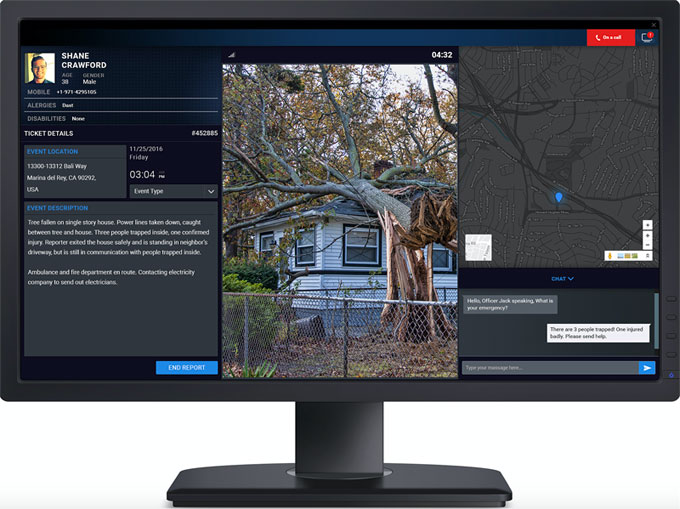
a multinational company providing emergency calling services across the globe, has positioned itself as the distributors of near-future technology that easily integrates into the existing systems that emergency services already use.
A lot has changed since the first 999 call 80 years ago. The way that we communicate has fundamentally shifted towards mobility and video.
For years, the public safety industry struggled to keep up with the continually moving tides of technology.
However, for the first time, emergency services have the chance to be able to not just ‘catch up’ with current technology but to prepare for the next generation of communications. Original post
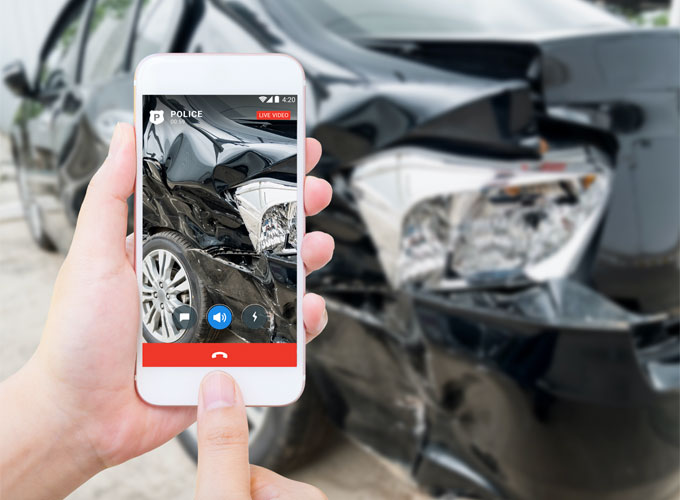
There are 240 million calls made to 911 each year.
Of these 240 million calls, it’s estimated that around 50% of those are misdialed.
Finally, thanks to advancements in location and video streaming technology, we can break-away from the ineffective and resource-wasting First In First Out paradigm that controls the public safety industry.
The First In First Out paradigm
The First In First Out paradigm makes sense in theory.
Each call that comes into a 911 PSAP must be answered in the order that it is made and each emergency carries equal weight.

If this was a call center for tech support, the paradigm fits.
All customers, no matter where they live or what they do, are alike and of identical importance to the company.
However, public safety is a far cry from tech support and it’s time to expand one of the most important elements of emergency response, triage, into how we contact 911.
 When you walk, roll, hobble, or are carried into an emergency room, half a dozen things happen without you realizing it.
When you walk, roll, hobble, or are carried into an emergency room, half a dozen things happen without you realizing it.
Within 30 seconds you are:
- immediately assessed by an experienced doctor or nurse and assigned into 4 categories/colors (depending on the country).
These categories are:
Minimal/Green
- Walking wounded/uninjured.
- These are patients that can function freely without assistance and answer questions coherently and accurately.
- In an emergency situation, they can assist medical staff in helping more severe cases and can be attended to later.
 Injured/Yellow
Injured/Yellow
- Moderately wounded.
- These patients have cuts and lacerations and are in need of some minor form of medical attention (i.e. dressing of wounds) before being upgraded to Minimal/Green.
Immediate/Red
- Severely injured.
- These patients require immediate care and will not survive if not seen.
- Frequently, these involve a severe head injury, multiple fractures to the skeletal system, fractures to a delicate area such as the spine, unable to answer simple questions, or unresponsive but with vital signs.
- Immediate aid is applied, often in the staging area/emergency room, to stop heavy bleeding and ensuring no obstructions to airflow.
Deceased/Black
- Died.
- These patients have died, in a low-casualty event CPR will be initiated to try to revive vital signs, but in a mass-casualty event, they will simply be moved onto their side with their mouth open.
- The first responder will move to the next victim and bodies will be collected once all surviving individuals have been removed.
The triage process (from the French word ‘to sort’) originated in the Napoleonic Wars and WW1 as battlefield aid stations were overrun with hundreds of patients at any one time.
Today, it has been codified into a procedure that saves lives on a daily basis.
The triage process exists because not all wounds are equal.
Someone who has been shot is in need of more immediate attention than someone with a sprained ankle.
By being able to assess and triage quickly, hospitals are maximizing their limited resources to save the most lives.
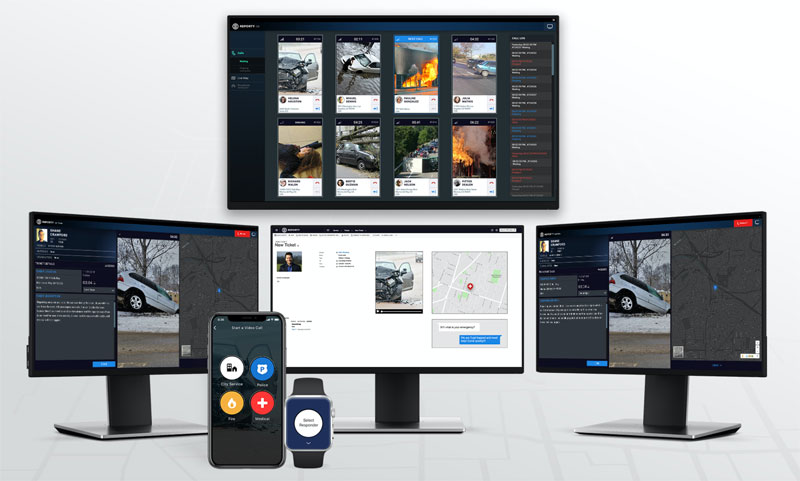
The question is, why has this necessary process not been extended to other elements of public safety, namely dispatch?
Call Takers are the very first contact that the public have with first responders.
They are simultaneously able to assess incoming calls, glean valuable information from distressed individuals, dispatch first responders, and they do all of this while trying to reassure callers and keep them calm.
Many Call Takers have also had to perform over-the-phone CPR and deliver babies if ambulances are unable to reach people in time.
For those who have been Call Takers for many years, they find themselves developing a near ‘sixth-sense’ in being able to identify callers in distress, intoxicated, or unable to speak.
911 Call Takers are essentially, assessors, medics, therapists, and navigators all rolled into one.
Today, Call Takers are overburdened with more calls than they can deal with, an aging infrastructure that has not kept up with modern technology, and a citizenry that is abandoning wired lines for wireless.
Because of this, a new call paradigm is needed and we have finally reached a point, technologically speaking, where it can be implemented with ease.
The most important aspect of 911 triage is the ability to visually assess the severity of a situation.
For this, video calling must come to the PSAP.
Seeing Is Believing
“A picture” the old adage goes “is worth a thousand words” at Carbyne, we have a different saying, “a picture is worth a 50% drop in dispatch time.”
Carbyne has deployed our Public Safety Ecosystem (PSES) in countries across the world, bringing video, instant location, call prioritization, and texting to different PSAPs.
As the number of PSAPs using our ecosystem has increased, so have response times dropped.
Video changes everything.
Whereas once you had to answer the call, request a location, assess the situation by asking a number of validating questions, and eventually dispatch first responders, you are now able to seamlessly triage calls.
Our C2i, shown below, effortlessly displays incoming video calls in a scalable display.
As the fields populate with calls, supervisors are able to sort the calls by severity. Because the video displays across the C2i instantly, supervisors can make quick determinations about the severity of a particular event and send it to a dispatcher if necessary.
Should a supervisor see something serious, for instance, a car crash or a gunshot victim, they can prioritize that caller over someone waiting patiently.
Carbyne’s C2i displays several incoming video calls, allowing PSAP supervisors to prioritize calls based on severity.
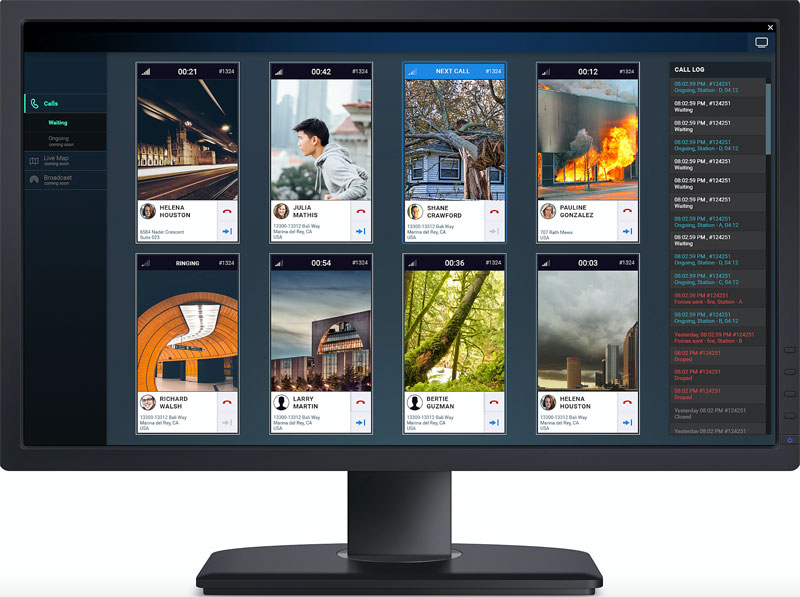
Because of the high number of ‘misdials’ to 911 (also known as ‘pocket dials’), the telephone triage means that supervisors can identify and downgrade misdialed 911 calls quickly.
The ability to dismiss these calls means that dispatchers no longer have to spend anywhere from 30 seconds to two minutes qualifying the call as a misdial and redialing the number to speak to the caller.
The addition of instant location, prominently displayed on both our C2i and Call Taker screens, allows dispatchers to see exactly where the person is calling from.
Utilizing device based location, Wi-Fi, Bluetooth, and other elements within a smartphone, our PSES can determine locations down to a 3-foot accurate radius.
Our unique x,y,z axis positioning means that we can locate someone based on elevation.
For instance, the ecosystem is able to determine both the floor that someone is calling from but also the room.
(See a demonstration of Carbyne’s C2i in Action. Courtesy of Carbyne911 and YouTube)
Our roll out in countries around the world has shown that the process that Call Takers answer phones have shifted with the arrival of video.
Whereas they used to answer calls with validating questions including:
-
Where are you located?
-
What is going on?
-
Are there any injuries?
-
Are there any weapons?
Now, with video and instant location, the Call Takers are simply answering the phone like this:
-
Hi, Michael, I see there’s a car crash at 7th Avenue and 30th St, is that correct?
The PSES dramatically reduces the time to dispatch because Call Takers have greater situational awareness.
Often, they can begin the process of sending first responders before they’ve even picked up the phone.
While some qualifying questions are still needed, they are often able to be rephrased in a way that provides comfort to the caller.
Because the Call Taker is presented with the caller’s information, including name, photo, and any allergies or disabilities, they can make a more personalized phone introduction.
For people in a high-stress environment, as most are when they call 911, it helps to have a comforting voice on the other end of the line who knows your name.
TheCarbyne PSES has brought down times to dispatch, a greater contextual awareness, and saved lives, money, and resources for emergency services wherever it has been deployed.
(Hear from Jonathan Jones, an 11 year veteran of 911 dispatch, about the issues regarding technology in 911, cell phones, and how video can change public safety. Courtesy of Carbyne911 and YouTube)
The new call paradigm of conducting telephone triage works because Call Takers have more information at their fingertips.
It’s only thanks to this perfect storm of technologies: smartphones, IP communications, larger data networks, and video streaming that we can witness the next evolutionary step in the way that emergency services handle calls.
Prioritization and triage save lives in the hospital, and it can save even more lives in the dispatch center.
By performing triage at the initial point of contact with 911, it’s possible to avoid a trip to the hospital, to begin with.
The 2017 ‘ASTORS’ Homeland Security Awards Program
American Security Today’s 2017 ‘ASTORS’ Homeland Awards Presentation Luncheon at ISC East was an overwhelming success, with distinguished guests from National, State and Local Governments, and Industry Leading Corporate Executives from companies allied to Government.
Over 100 professionals gathered from across North America and the Middle East to be honored from disciplines across the Security Industry in their respective fields which included:
- The Department of Homeland Security
- The Department of Justice
- The Security Exchange Commission
- State and Municipal Law Enforcement Agencies, and
- Leaders in Private Security

Recognized for their Innovative Training and Education Programs, Outstanding Product Development Achievements and Exciting New Technologies to address the growing Homeland Security Threats our Nation is facing.
American Security Today was formed after careful reflection of 9/11 and its aftermath when the Department of Homeland Security was established and there was an immediate explosion of new products and solutions for what was perceived as an imminent second attack on primary targets in the United States.
As time moved forward from 9/11 itself and in recent years, the threats to our nation have evolved from a large scale 9/11 type attack to:
- Domestic and International Terrorist Attacks carried out by ‘lone wolves’ and coordinated individuals
- Cybersecurity breach attacks against our government agencies, financial institutions and critical infrastructure facilities
- Unprecedented urban violence
- Cultural shifts and societal media bias, which make it increasingly difficult to secure our nation in this constantly evolving threat environment.
These current circumstances have put forward another rapid expansion of new ideas, products and solutions to combat these ever changing challenges.
These changes have called for a new generation of security experts in the Homeland Security and Public Safety fields who need real time knowledge of our ever growing threats.
These experts include the Government at the Federal, State and Local levels as well as from Private Firms specializing in Physical Security, Port Security, Law Enforcement, First Responders, Military and Private Security responsible for implementing coordinated security measures to ensure our Nation’s Security and improve Public Safety.
 Together, each of these entities work together seamlessly on the front lines of protecting our communities, to ‘Keep our Nation Secure, One City at a Time.’
Together, each of these entities work together seamlessly on the front lines of protecting our communities, to ‘Keep our Nation Secure, One City at a Time.’
AST focuses on Homeland Security and Public Safety Breaking News, the Newest Initiatives and Hottest Technologies in Physical & IT Security, essential to meeting today’s growing security challenges.
To highlight the tremendous accomplishments of agencies and firms receiving this prestigious award, check out American Security Today’s 2017 December ‘ASTORS’ Champions Edition – ‘Year in Review.’
To find out more about how you can enhance your 911 center, contact Carbyne at www.carbyne-hls.com.















